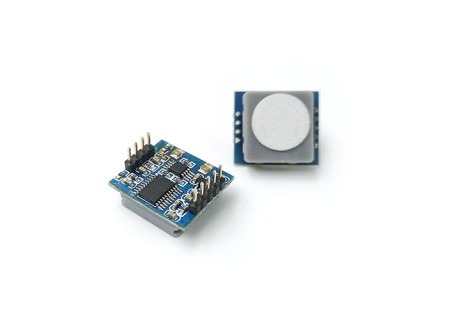Determination method of PM2.5 in ambient air
-500x500.jpg)
Determination method of PM2.5 in ambient air
With the acceleration of urbanization and the rapid development of industrialization, environmental pollution problems have become increasingly prominent. Among them, PM2.5 refers to particulate matter in the ambient air with a diameter less than or equal to 2.5 microns. It is also called fine particulate matter and particulate matter that can enter the lungs. It is one of the main causes of environmental pollution. PM2.5 is very harmful to the human body. It can directly affect the function of the respiratory system and cause gas exchange disorders in the alveoli, thereby affecting human health. Therefore, the monitoring and analysis of PM2.5 is of great significance to protect people's health and the stability of the environment.
The measurement methods of PM2.5 in ambient air mainly include the following:
1. High-performance liquid chromatography (HPLC)
High-performance liquid chromatography is a commonly used method for determining particulate matter and can be used to determine the content of PM2.5 in ambient air. This method is based on the principle of molecular distillation, by mixing the sample with a specific compound, separating and detecting the compound on a chromatography column to determine the type and amount of particulate matter. HPLC has the advantages of high separation efficiency, high sensitivity, and high precision, and is a relatively reliable method for determining particulate matter.
2. Gas chromatography (GC)
Gas chromatography is a method of analyzing gaseous particulate matter and can be used to determine the content of PM2.5 in ambient air. This method works by mixing a sample with a specific compound, separating and detecting the compound on a gas chromatography column to determine the type and amount of particulate matter. GC has the advantages of high separation efficiency, high sensitivity, and high precision, and is a relatively reliable method for measuring particulate matter.
3. Atomic absorption spectrometry (AAS)
Atomic absorption spectrometry is a method for analyzing atomic particles and can be used to determine the content of PM2.5 in ambient air. This method determines the type and content of particulate matter by mixing the sample with a specific atomic source and detecting the absorption spectrum of the atoms on an atomic absorption spectrometer. AAS has the advantages of high analytical efficiency, high sensitivity, and high precision, and is a relatively reliable method for measuring particulate matter.
4. Laser particle size analyzer method (laser particle size analyzer method, LFP)
The laser particle size analyzer method is a method of measuring the size and shape of particulate matter through a laser beam, and can be used to determine the content of PM2.5 in ambient air. This method determines the type and content of particles by mixing the sample with a specific laser beam and measuring the size and shape of the particles on a laser particle sizer. LFP has the advantages of high measurement accuracy and fast speed, and is a relatively reliable method for measuring particulate matter.
The above are the main methods for measuring PM2.5 in ambient air. Each has its own advantages and disadvantages. The most appropriate method should be selected according to the specific situation.







-450x320.jpg)
-450x320.jpg)
-450x320.jpg)

-450x320.jpg)